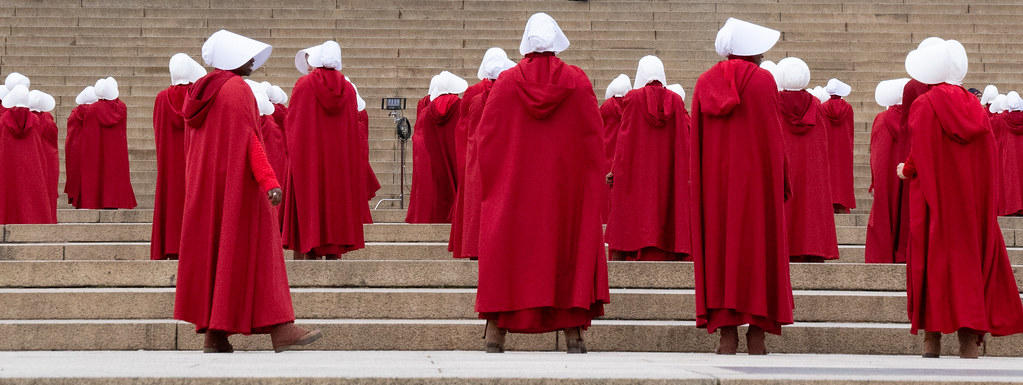
The symbolism behind red and white is not the only thing Poland and ‘The Handmaid’s Tale’ have in common. Poland has some of the most restrictive abortion laws in the European Union; with women only being allowed to terminate a pregnancy in case of foetal abnormality, rape, incest or to protect the mother’s life. But not anymore. On the 22nd of October, the top court in Poland ruled that abortions in case of foetal defects are not constitutional. Given the fact that these make up 98% of all legal abortions in Poland, this ruling represents an almost total ban on abortions.
Leave it to old white men in positions of power and to the Catholic Church to come together to impose constraints on women’s bodies and future, whilst claiming to protect human rights. For Jarosław Kaczyński, the leader of the ruling party in Poland, his decision might only be a populist strategy to distract the public’s attention from the Law and Justice party’s failure in dealing with the COVID-19 situation, but the court ruling has far-reaching societal consequences. The protests that have erupted everywhere in Poland are not just about women’s rights but also, more generally, about freedom of choice in a country that has, over the recent years, gradually drifted away from the European Union’s commitment to protect human rights.
How banning abortions can go very wrong
Communist Romania is probably one of the most well-documented cases and one of the best examples of how banning abortions can have horrible repercussions on society and its members. In 1966 Romania’s communist leader implemented Decree 770, banning not only abortions but also any kind of contraception, in an attempt to increase the population of the country. His was a nationalist pursuit that completely disregarded the rights of women and the dire conditions in which many Romanians had to live. Women were encouraged to have at least four children, in a restrictive environment in which many people did not have the means to support themselves. Because leaving the country was very difficult for most citizens, women had to resort to unsafe and unhygienic practices that led to complications or death. By 1989, approximately 10,000 women died due to illegal abortions, although the number is believed to be higher. Moreover, because many women had to continue unwanted pregnancies and did not have the necessary resources to support a child, thousands of children were given to state orphanages, where they lived in inhumane conditions; starved, abused and left to die by authorities that did not have the resources or the interest to invest in their upbringing.
Ending on a hopeful note?
Hospitals have already started to adopt the court ruling, even though it has not yet been implemented, refusing to assist women seeking abortions. However, as history shows, banning abortions does not stop women from trying to terminate unwanted pregnancies. They usually seek help from other countries, having to pay extensively not only to travel abroad but also to undergo surgical abortions. But with cases of COVID-19 infections on the rise and the probability that borders will close again, women will have to turn to illegal and risky alternatives. Nevertheless, some remain hopeful that the current protests will spark a revolution that will bring about the same changes that were implemented in Ireland in the 2018 Referendum, which overturned the ban on abortions.



Average Rating